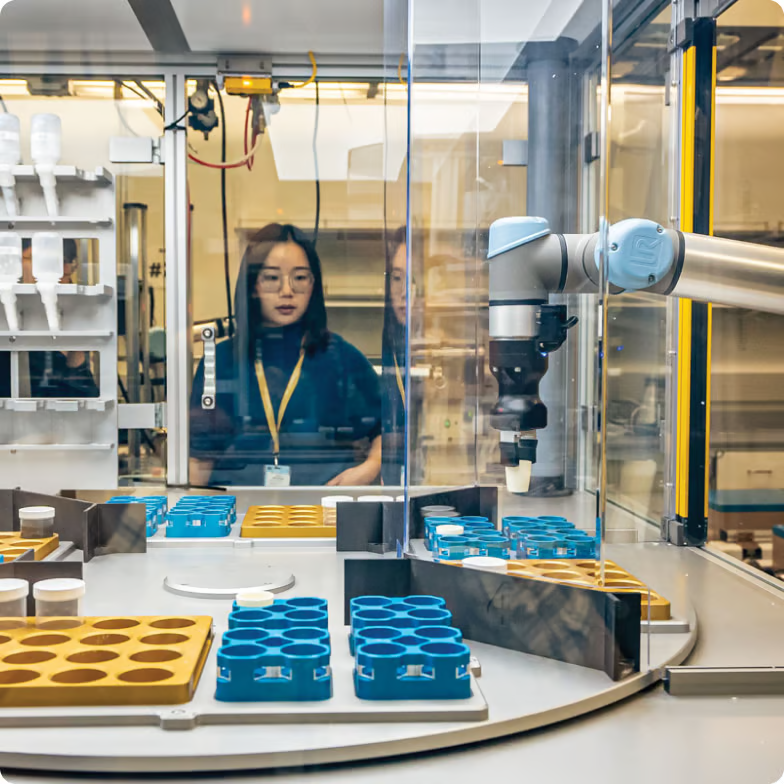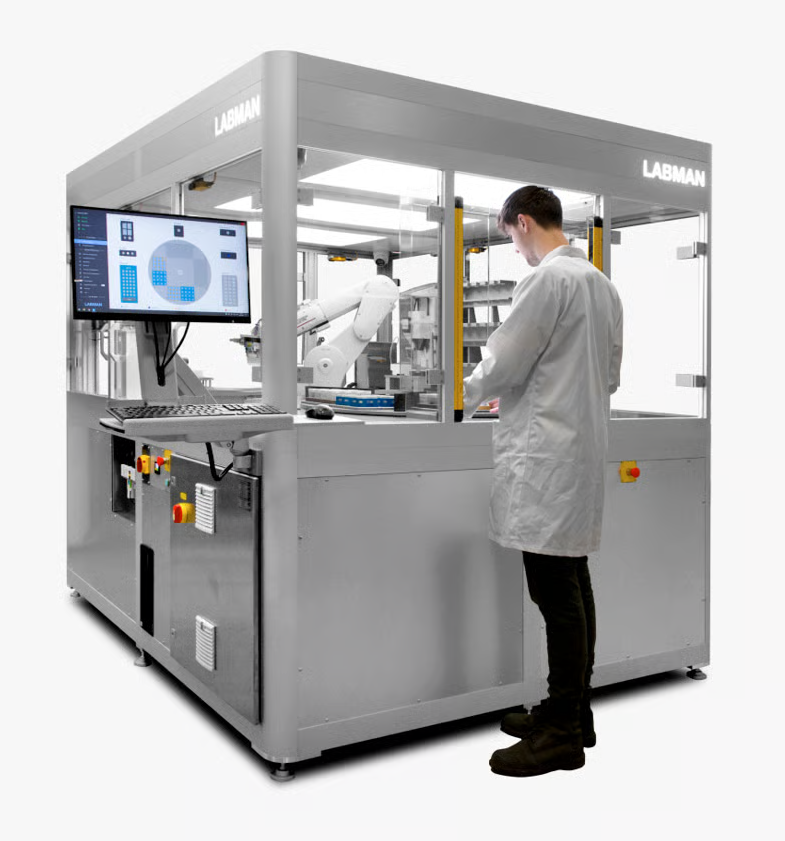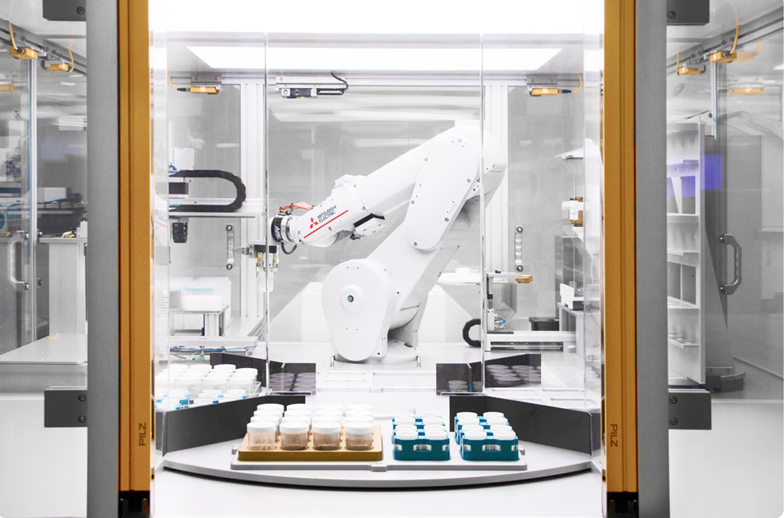Sponsored by LabmanReviewed by Maria OsipovaNov 3 2025
Explore how Labman's system has been indispensable in this cutting-edge automated laboratory in California.

Image Credit: Labman
Challenge and Solution
With over 150,000 new materials developed by the Materials Project computers, Berkeley Lab, headquartered in California, could not synthesize these novel materials quickly enough to evaluate them for real-world applications.
To overcome this, Berkeley Lab partnered with Labman to develop a fully customized system to synthesize the materials in an automated, twenty four hour a day operation pattern, guided by AI predictions for successful synthesis conditions and material composition.
Results
Labman technology has made a significant difference to this project. The system can now synthesize the novel materials in a safe and repeatable way in under an hour, a process that would have previously required about a day to achieve.
Throughput was 100 times higher than that of manual material synthesis. 40 novel predicted compounds were produced in the first month, marking a significant advancement relative to traditional manual methods.
Labman’s clients are at the forefront of numerous areas of scientific research, especially in material science and formulation. For the researchers at Berkeley Lab (Lawrence Berkeley National Laboratory), manually synthesizing 150,000 novel AI-predicted materials presented a challenging task.
With automation rapidly becoming an integral part of advanced laboratories worldwide, the research team turned to Labman to create a fully customized solution for their predicament.
Using its extensive experience in handling diverse powders, liquid dispensing, formulation, and synthesis, Labman developed a high-throughput, powerful system to fulfill the project’s strict requirements.
The LBC system, based around a 6-axis robotic arm and equipped with a ‘hotel’ of dispensers handling more than 200 different powder-based materials, is ideal for creating distinct formulations. Labman’s mechanical, electrical, and software engineers collaborated closely with the Berkeley Lab team to thoroughly understand the required process and ensure that it elevated their workflow.
“The Labman team has been tremendously supportive and responsive throughout the whole project. I am grateful to work with Matt, Olly, Nick, and other team members at Labman to make and deliver our LBCS robot,” stated Yan Zeng, a materials scientist who led Berkeley Lab’s team on the project.
“Labman has an open-minded attitude and great creativity with these talented and kind team members that I have not seen from another company,” he said.

An operator using LBCS, the automated formulation system for Berkeley Lab. Image Credit: Labman
After system commissioning and initial testing were completed, Berkeley Lab researchers began processing the 150,000 proposed formulations for new materials listed by their systems. With speed and efficiency as core motivations behind the technology, the team was satisfied with the system’s performance and the resulting materials created.
I have made more new compounds in the last six weeks than my whole career.
Gerbrand Ceder, Faculty Senior Scientist, LBNL Professor, UC Berkeley

A robot arm carries samples around the system, allowing for parallel processing. Image Credit: Labman
This exciting new technology opens up a world of possibilities for Berkeley Lab and the Material Project team. It marks the beginning of an excellent partnership with Labman, which will support the system and ensure the robot operates smoothly and efficiently for years to come.

This information has been sourced, reviewed and adapted from materials provided by Labman.
For more information on this source, please visit Labman.